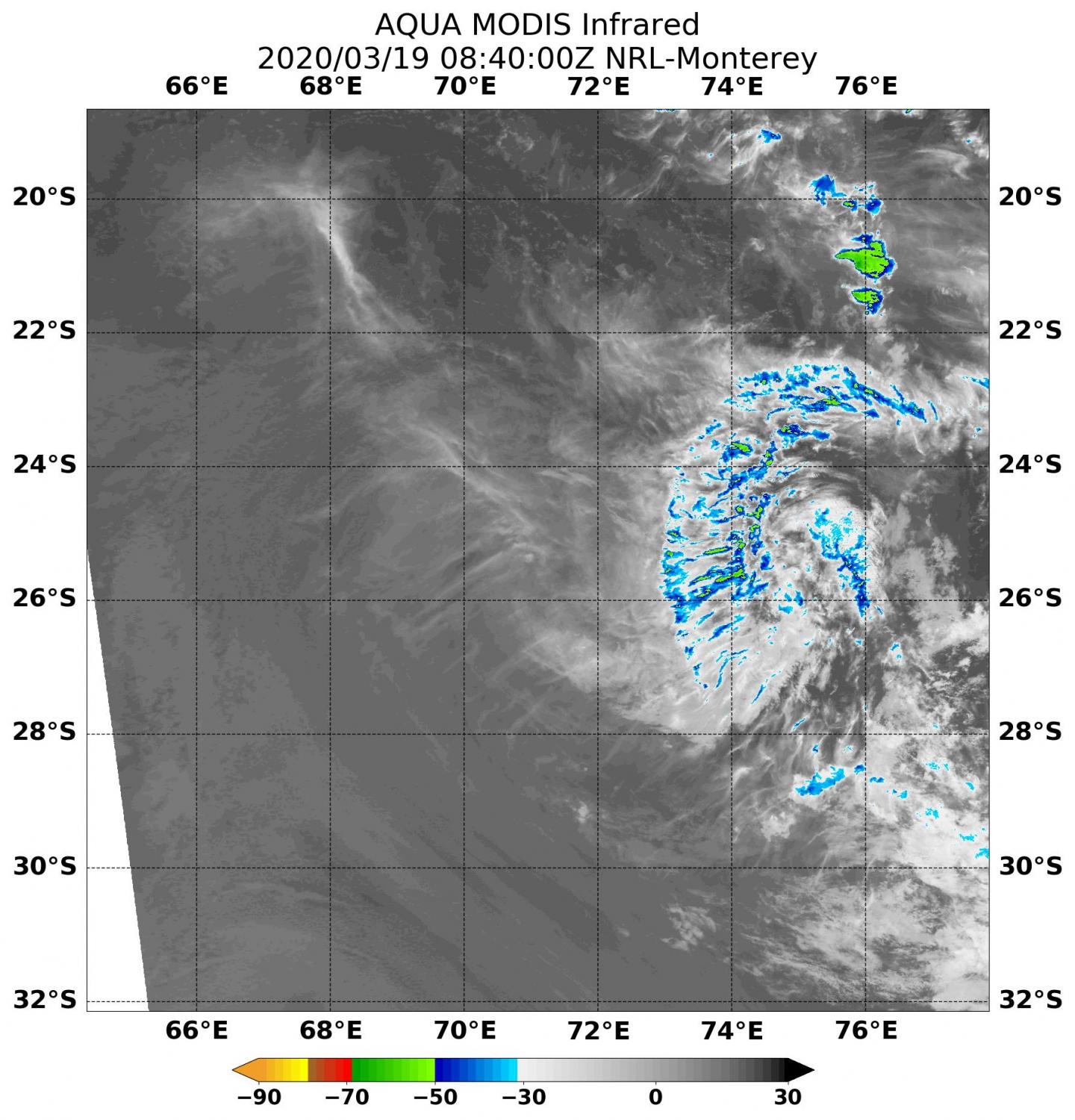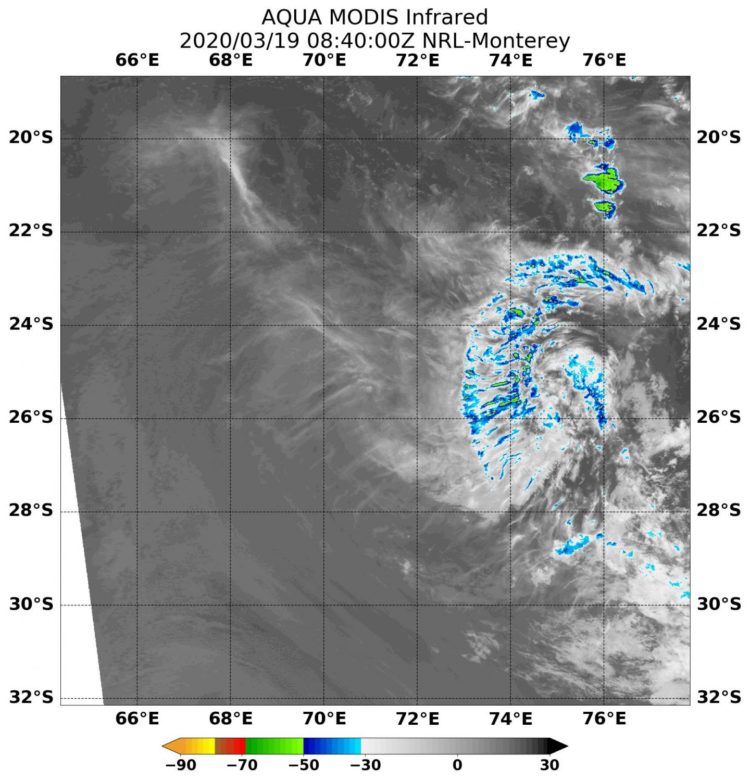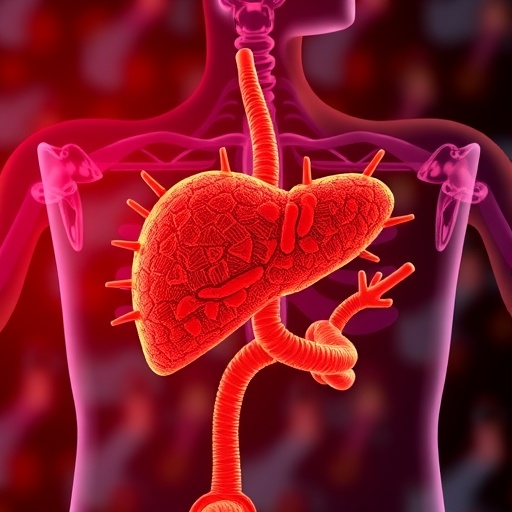
Credit: NASA/NRL
Wind shear pushed former Tropical Cyclone Herold apart and infrared imagery from NASA’s Aqua satellite showed the system with very little strength remaining.
NASA’s Aqua satellite uses infrared light to analyze the strength of storms by providing temperature information about the system’s clouds. The strongest thunderstorms that reach high into the atmosphere have the coldest cloud top temperatures.
On March 19, 2020, the Moderate Resolution Imaging Spectroradiometer or MODIS instrument that flies aboard NASA’s Aqua satellite gathered infrared data on Herold. Animated multispectral satellite imagery showed Herold’s low-level circulation center is partially exposed and there is minimal associated strong convection (rising air that forms the thunderstorms that make up tropical cyclones). Strongest thunderstorms had cloud top temperatures as cold as minus 50 degrees Fahrenheit (minus 45.5 Celsius).
At 5 a.m. EDT (0900 UTC), the center of Tropical Storm Herold was located near latitude 25.4 degrees south and longitude 71.1 degrees east, about 827 nautical miles east-southeast of Port Louis, Mauritius. Maximum sustained winds were near 46 mph (40 knots/74 kph).
Vertical wind shear, that is winds outside of a tropical cyclone at different heights in the atmosphere (the troposphere), push against a tropical cyclone and tear it apart. Herold is in an area of high wind shear blowing between 25 to 30 knots (29 to 35 mph/46 to 56 kph)
The Joint Typhoon Warning Center (JTWC) forecast notes that Herold will continue moving southeast and weaken rapidly because it is moving into an area of increased vertical wind shear speeds and cooler sea surface temperatures. The storm will dissipate within 24 hours.
Tropical cyclones/hurricanes are the most powerful weather events on Earth. NASA’s expertise in space and scientific exploration contributes to essential services provided to the American people by other federal agencies, such as hurricane weather forecasting.
###
Media Contact
Rob Gutro
[email protected]
Original Source
https:/





